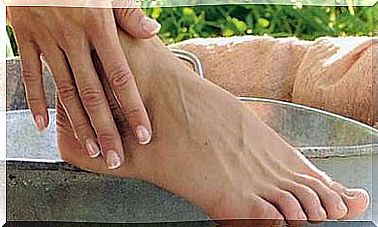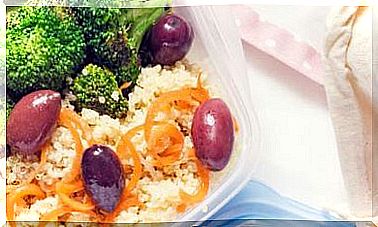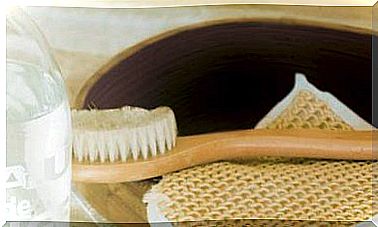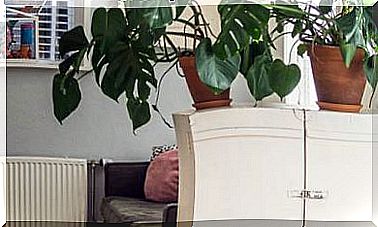5 Simple Cleaning Habits That Can Save The Environment
Limit the use of chemical products, replace them with traditional formulas, follow hygiene advice … We bring you safe and healthy ways to take care of your home and our environment.

One of the serious ecological contradictions of modern society is that the obsession with cleanliness is linked to the habitual use of innumerable products that become threats to health and the environment. In fact, there has been a change in the global conception of hygiene: from pure air, clean and fresh water, the sun, exercise and a healthy, simple and natural diet, we have passed to the asepsis of hospitals, disinfection and sterilization.
We easily accept each new product that is presented to us as scientifically proven and incorporate it into cleaning routines at home and work without worrying too much about the consequences it has on our health and that of our environment.
But, paradoxically, this change in habits, far from bringing us closer to greater health, even takes us dangerously away from it for two reasons:
- The toxic substances present in these products alter the chemical nature of the air we breathe and permeate fabrics, carpets, furniture, floors, food and water, causing a large number of health problems;
- The microbicidal properties of the vast majority of these products break the balance with the microorganisms that inhabit our interior, altering the vital functions that they perform for us or causing reactions called autoimmune or allergic.
The danger of cleaning products
According to the National Institute for Safety and Hygiene at Work, detergents, soaps, disinfectants, glass cleaners, stain removers, plungers, solvents, degreasers, furniture polish and aerosols contain ammonia, phenol, nitrobenzene, formaldehyde, alcohols, alkyphenols, benzene and phthalates, among a endless list of substances.
In addition to the obvious danger of acute poisoning by ingestion or accidental contact, these toxins have been associated in scientific studies with numerous health problems, especially in children and pregnant women, such as asthma, alterations of the nervous system, reproductive problems in men and women. women, abortions, premature births, malformations and neurological damage in babies, multiple chemical sensitivity syndrome, chronic fatigue syndrome, fibromyalgia and degenerative damage such as that associated with Parkinson’s.
As if that were not enough, both cleaning products and a large number of everyday objects also contain some bactericide or fungicide, such as thymol –which can cause burns and eye injuries, respiratory failure and damage to the cardiovascular and nervous system–; the cloxilenol, equally dangerous and common in female intimate hygiene products; and very especially triclosan, present in a thousand everyday products, from bathroom accessories and bedding, to construction materials, toys and diapers.
Triclosan can affect the thyroid and other hormonal systems, increase the level of calcium in neurons and alter estrogen metabolism, damaging pregnancy.
It must be taken into account that there are large economic interests behind these products that constitute a barrier for adequate information about their safety to reach citizens.
- The studies are financed by the manufacturers themselves and, since they are not responsible for the damage they cause if they were not aware of them, they tend to investigate them very superficially.
- Most of the tests are done with animals, in very short periods and with a single substance, which means that the long-term effects in humans and the reactions that the chemical cocktail causes in our homes are not investigated.
- Furthermore, a substance is only prohibited when it has already caused serious harm and affected many people.
Faced with this situation, what is in our power?
We can incorporate some simple habits that will help reduce the danger posed by these chemicals.
1. Raise awareness
The first measure is to become aware of the problem and make the decision to try to solve it instead of being carried away by indolence because we think that it is the responsibility of the administrations and manufacturing companies, or we believe that our contribution will be insignificant compared to the attitude of the majority , which is not going to do anything.
Any reduction in toxicity will have a positive impact on our health and that of the environment.
In addition, we can complement our individual attitude by supporting environmental organizations or participating in informational and social activism campaigns, such as www.hogarsintoxicos.org. In this way we will help to create the necessary collective awareness of the problem to demand actions from the administration or the companies involved.
2. Eliminate or reduce.
The second concrete measure should be the elimination or reduction of products containing toxic substances.
If we cannot eliminate them completely, let’s at least make a rationalization effort and use those that we consider really essential, using them in less quantity and taking precautions : avoid inhaling them, adequately ventilate the rooms, rinse with water to reduce residual chemicals, be careful with the products. that when mixed with ozone they generate formaldehyde –such as terpenes– and, finally, take care when storing the products, closing the caps tightly and keeping them in isolated places.
3. Use ecological products.
It is important to note that some of the products that are advertised as organic are actually not organic, at least in the sense of being completely free of toxic substances. They can call themselves ecological because they do not contain phosphates, for example, but they do contain other harmful substances. It is necessary to inform yourself properly and check the components of the products to be sure.
The three fundamental criteria that products must meet to be considered effectively environmentally friendly are:
- 100% biodegradable components
- Ingredients from organic farming (avoiding, for example, percarboxylates or polycarboxylates)
- That their design and manufacture involve the least possible environmental impact.
4. Use traditional home recipes.
The safest and cheapest option is to make our own products.
A few products are enough to cover all the cleaning needs in the home: vinegar, which reduces and cuts grease; the natural, non-toxic and easily degradable soap ; the lemon, antioxidant, stain removers and refreshing; the ethyl alcohol, disinfectant and cleaning fluid; and glycerin, a non-toxic cleaner with many applications.
How to make at home …
- … soap : from glycerin or caustic soda, a wide range of soaps can be made both for personal use and for cleaning the house.
- … detergent : natural soap or a mixture made of baking soda, borax and vinegar can be used.
- … multipurpose cleaner : mix half water and half vinegar in a manual spray bottle and add a little natural soap and bicarbonate of soda.
- … furniture polish: mix one part vinegar with three parts olive oil; if they are made of wood, better to use two tablespoons of beeswax with one of sugar and boil it all in beer. It must be allowed to cool before use.
- … oven cleaner: add two tablespoons of liquid soap, two of borax and hot water; apply the preparation in the oven and leave for twenty minutes. Then you have to rub with abrasive powder on a metal scourer.
- … glass cleaners: they can be cleaned with water alone or mixed with vinegar in equal parts, better using newspaper.
- … toilet bowl cleaner: add equal parts vinegar and baking soda and leave to act overnight; rub well the next morning.
- … disinfectant: clean regularly with a mixture of water and natural soap or vinegar.
6. Reduce toxins
Open the windows and ventilate to create currents of fresh air and avoid excess moisture that spreads toxins; use the vacuum cleaner to clean the carpets and do not glue the furniture to the walls to let the air flow.
Fill the house with plants that absorb toxins, and use essential oils instead of air fresheners.









